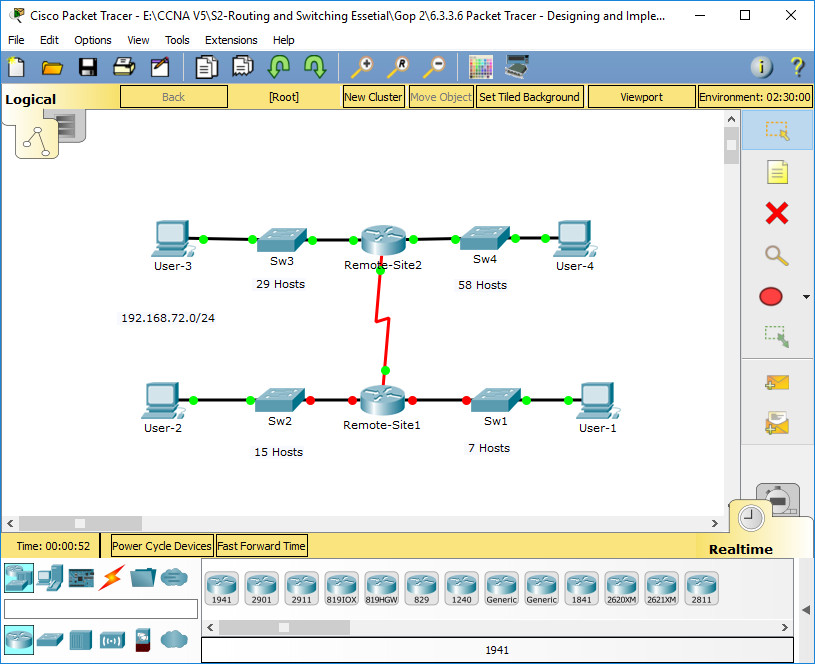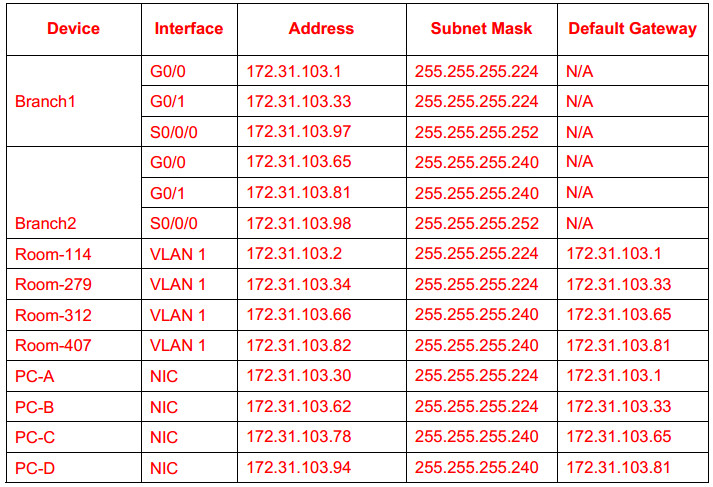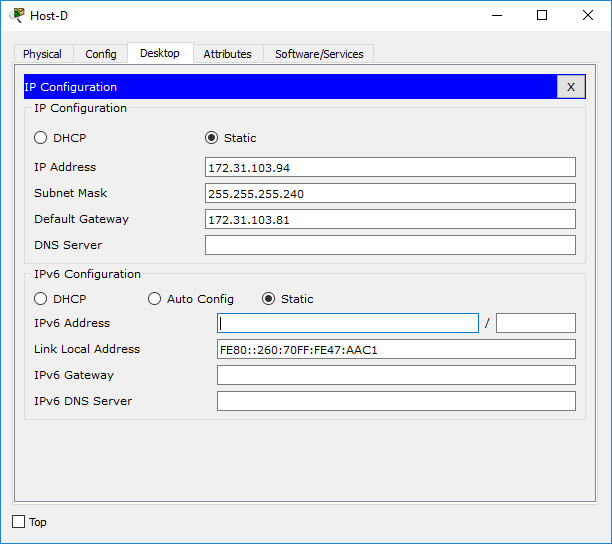6.3.3.6 Packet Tracer – Designing and Implementing a VLSM Addressing Scheme

Addressing Table
Objectives
Part 1: Examine the Network Requirements
Part 2: Design the VLSM Addressing Scheme
Part 3: Assign IP Addresses to Devices and Verify Connectivity
Background
In this activity, you are given a /24 network address to use to design a VLSM addressing scheme. Based on a set of requirements, you will assign subnets and addressing, configure devices and verify connectivity.
Scenario 1 – Network Address: 172.31.103.0/24
Part 1: Examine the Network Requirements
Step 1: Determine the number of subnets needed.
You will subnet the network address 192.168.72.0/24. The network has the following requirements:
· Sw1 LAN will require 7 host IP addresses
· Sw2 LAN will require 15 host IP addresses
· Sw3 LAN will require 29 host IP addresses
· Sw4 LAN will require 58 host IP addresses
How many subnets are needed in the network topology? 5 subnets
Step 2: Determine the subnet mask information for each subnet.
a. Which subnet mask will accommodate the number of IP addresses required for Sw1? 255.255.255.224
How many usable host addresses will this subnet support? 32
b. Which subnet mask will accommodate the number of IP addresses required for Sw2? 255.255.255.224
How many usable host addresses will this subnet support? 32
c. Which subnet mask will accommodate the number of IP addresses required for Sw3? 255.255.255.240
How many usable host addresses will this subnet support? 16
d. Which subnet mask will accommodate the number of IP addresses required for Sw4?
255.255.255.240
How many usable host addresses will this subnet support? 16
e. Which subnet mask will accommodate the number of IP addresses required for the connection between Remote-Site1 and Remote-Site2? 255.255.255.252
Part 2: Design the VLSM Addressing Scheme
Step 1: Divide the 192.168.72.0/24 network based on the number of hosts per subnet.
a. Use the first subnet to accommodate the largest LAN.
b. Use the second subnet to accommodate the second largest LAN.
c. Use the third subnet to accommodate the third largest LAN.
d. Use the fourth subnet to accommodate the fourth largest LAN.
e. Use the fifth subnet to accommodate the connection between Remote-Site1 and Remote-Site2.
Step 2: Document the VLSM subnets.
Complete the Subnet Table, listing the subnet descriptions (e.g. Sw1 LAN), number of hosts needed, then network address for the subnet, the first usable host address, and the broadcast address. Repeat until all addresses are listed.
Subnet Table


Step 3: Document the addressing scheme.
a. Assign the first usable IP addresses to Remote-Site1 for the two LAN links and the WAN link.
b. Assign the first usable IP addresses to Remote-Site2 for the two LANs links. Assign the last usable IP address for the WAN link.
c. Assign the second usable IP addresses to the switches.
d. Assign the last usable IP addresses to the hosts.
Part 3: Assign IP Addresses to Devices and Verify Connectivity
Most of the IP addressing is already configured on this network. Implement the following steps to complete the addressing configuration.
Step 1: Configure IP addressing on Remote-Site1 LAN interfaces.
Step 2: Configure IP addressing on Sw3, including the default gateway.
Step 3: Configure IP addressing on User-4, including the default gateway.
Step 4: Verify connectivity.
You can only verify connectivity from Remote-Site1, Sw3, and User-4. However, you should be able to ping every IP address listed in the Addressing Table.

